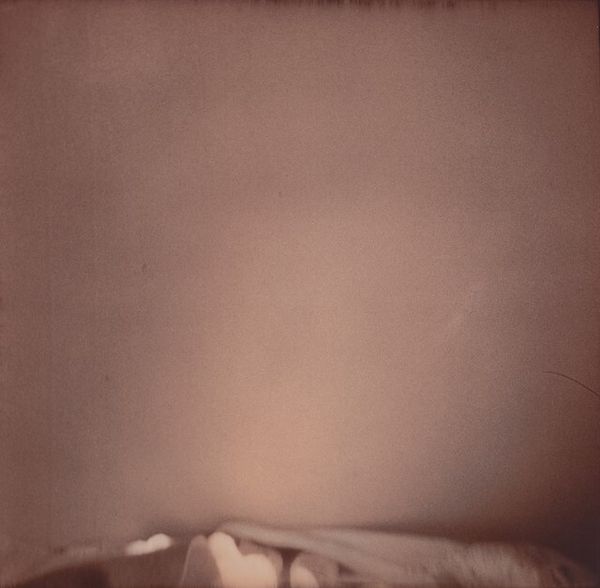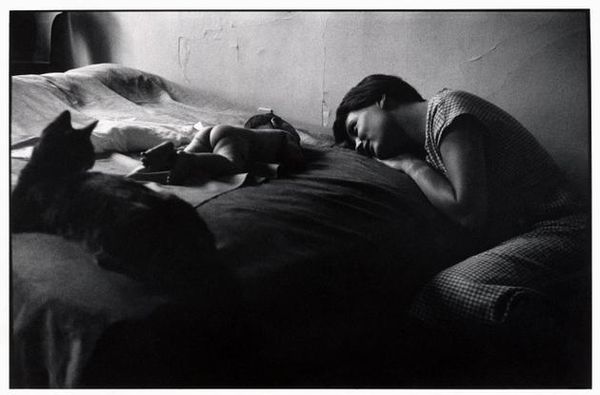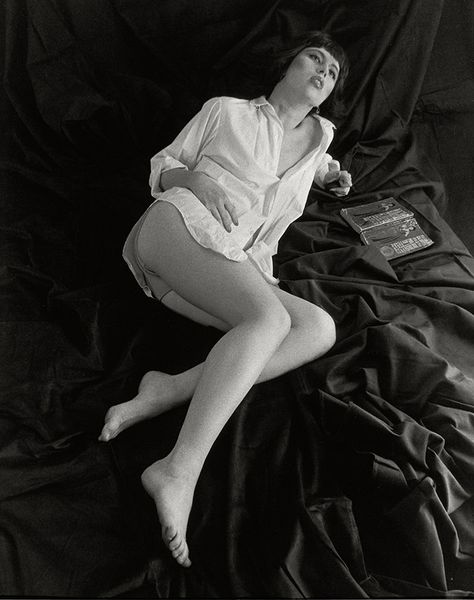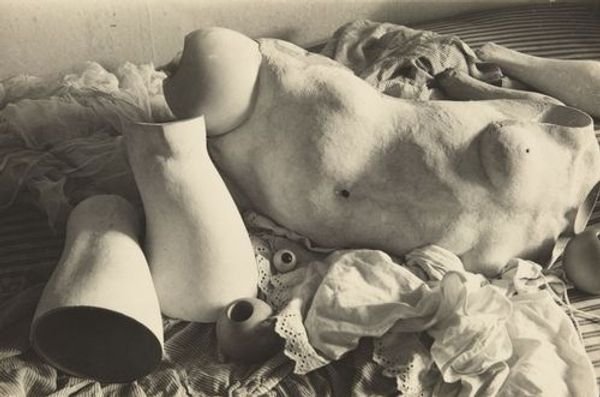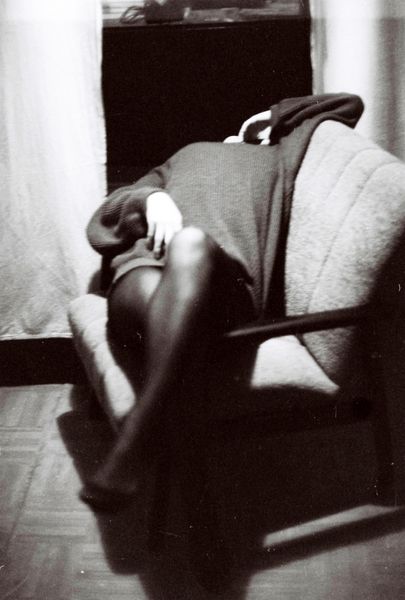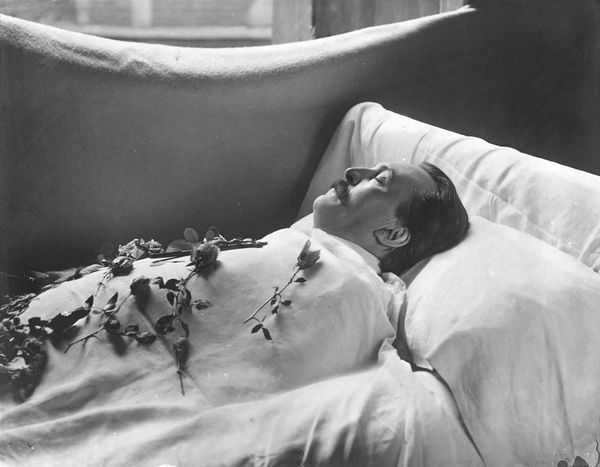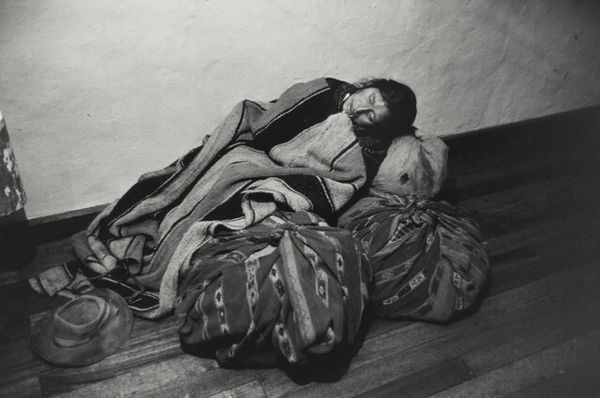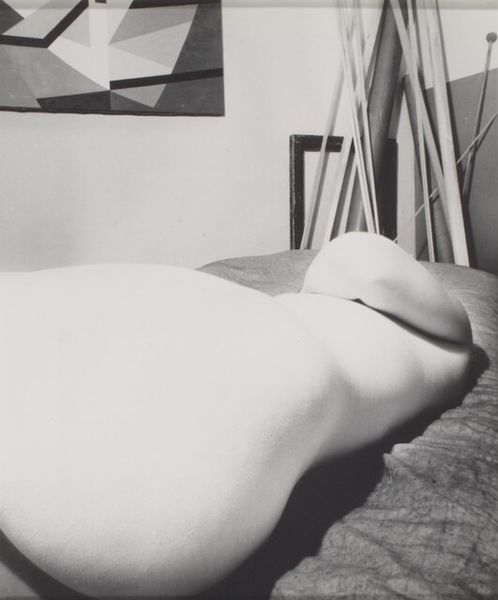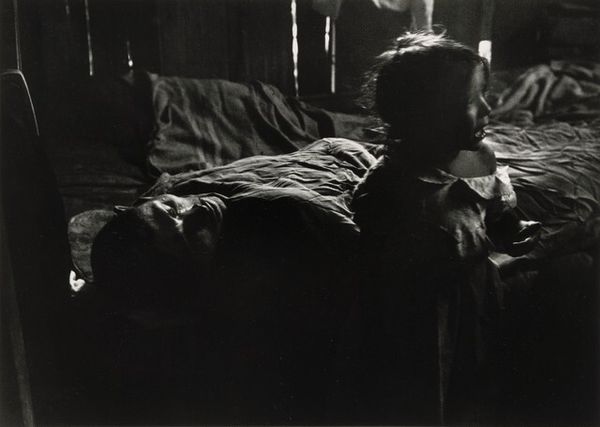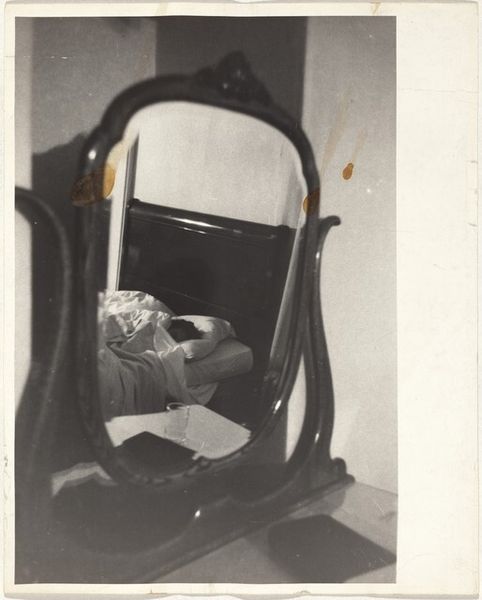
photography, gelatin-silver-print
#
portrait
#
black and white photography
#
black and white format
#
photography
#
black and white
#
gelatin-silver-print
#
monochrome photography
#
monochrome
#
realism
#
monochrome
Dimensions: image/sheet: 13.2 × 23 cm (5 3/16 × 9 1/16 in.) mount: 37.9 × 39.4 cm (14 15/16 × 15 1/2 in.)
Copyright: National Gallery of Art: CC0 1.0
Curator: Edward Weston's photograph "Neil Asleep," a gelatin-silver print from 1925, captures a moment of quiet vulnerability. What do you make of it initially? Artist: It feels so intimate, doesn't it? The whole scene is steeped in shadows, save for a glimmer on the boy's forehead and the toes of his well-worn boots. He looks exhausted, like sleep ambushed him mid-adventure. Curator: Absolutely. This image comes at a time when photography was grappling with its identity as art. Weston, influenced by modernist ideals, sought to reveal the essential forms of his subjects, be they landscapes, objects, or in this case, a young boy. The clothing speaks volumes, doesn't it? That plaid shirt and the sturdy boots, suggest a certain working-class reality of the time. Artist: True. The high contrast and the tight focus also seem intentional, pushing us to notice every thread in the fabric, every scuff on the boots. There's a sense of stark honesty, stripped of romanticism. But what strikes me the most is the tenderness in how he’s captured the boy’s rest. It's weary rest, maybe, but there’s stillness in it, and the soft curve of his hand suggests protection. Curator: I see it as a commentary on childhood and labor. Even in supposed moments of rest, there's a performative element forced upon these kids by capitalist demands. His sleep, however peaceful, is framed within the harsh realities of early 20th-century American life. This perspective on innocence highlights childhoods shaped by forces of power beyond his control. Artist: I like how you brought in the socio-economic aspect. Now I am thinking of how fleeting such an ordinary moment is made profound with technique. It makes you appreciate Weston for capturing how weary, vulnerable, and somehow hopeful our sleeps can be. Curator: I agree. There's beauty in how Weston portrays these intersections of class, rest, and early masculinity, but even more how his portraits can teach us things still relevant to today. Artist: A thought-provoking glimpse of the quiet world and subtle poetics, and the political implications, wrapped up in sleep! Thanks, Weston, for the dreamscape.
Comments
No comments
Be the first to comment and join the conversation on the ultimate creative platform.


